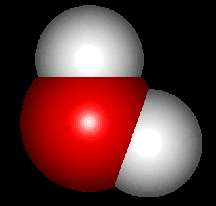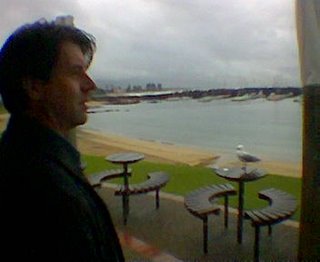Dangerous Solvent!!!!!!!

From Dr Karl.....
winner of an Ig-Nobel prize in 2002 for his comprehensive survey on belly buton lint.
Consider the chemical DiHydrogen MonOxide, usually called DHMO. It's found in many different cancers, but there's no proven causal link between its presence and the cancers in which it lurks - so far. The figures are astonishing - DHMO has been found in over 95% of all fatal cervical cancers, and in over 85% of all cancers collected from terminal cancer patients. Despite this, it is still used as an industrial solvent and coolant, as a fire retardant and suppressant, in the manufacture of biological and chemical weapons, in nuclear power plants - and surprisingly, by elite athletes in some endurance sports. However, the athletes later find that withdrawal from DHMO can be difficult, and sometimes, fatal. Medically, it is almost always involved in diseases that have sweating, vomiting and diarrhoea as their symptoms.
While it has many industrial uses, it is cheap enough to be casually dumped into the environment, where it has many unwanted side-effects. DHMO is a major contributor to acid rain, and is heavily involved in the Greenhouse Effect. In industry, it can short out electrical circuits, and can reduce the efficiency of your car's brakes. It is used to help distribute pesticides and herbicides - and long after the pesticides and herbicides may have have degraded away, the DHMO will remain, because it is so stable.
One reason that DHMO can be so dangerous is its chameleon-like ability to not only blend in with the background, but also to change its state. As a solid, it causes severe tissue burns, while in its hot gaseous state, it kills hundreds of people each year. Thousands more die each year by breathing in small quantities of liquid DHMO into their lungs.
In 1990, at the Santa Cruz campus of the University of California, Eric Lechner and Lars Norpchen publicised the dangers of DHMO - DiHydrogen MonOxide. Enough people had begun to use the internet by 1994 to give another person, Craig Jackson, an ideal forum (via his web page) to set up The Coalition to Ban DHMO. Slowly, awareness of this chemical spread more widely. In 1997, 14-year-old Nathan Zohner at the Eagle Rock Junior High School in Idaho surveyed 50 of his fellow students after telling them of the "dangers" of DHMO - and 43 of them signed a petition to immediately ban this chemical.
In March 2004, the small city of Aliso Viejo in Orange County in California put, onto the official agenda of the next meeting of the Council, a motion to ban Styrofoam containers because the toxic chemical, DHMO, was used to make them. This motion was put onto the agenda because an enthusiastic paralegal on the Aliso Viejo City payroll had read of DHMO's evil properties on the internet.
Luckily for the reputation of the City, the motion was withdrawn before it could be voted on.
Why luckily, you ask?
Well, DHMO, DiHydrogen MonOxide, also known as Hydric Acid, Hydronium Hydroxide, is usually called just plain water. First-year University Chemistry students have made laboured jokes about water's chemical properties for years.
By the way, theres a Material Safety Data Sheet (MSDS) for Water at Oxford University here.
Love the disclaimer:
This information was last updated on March 30, 2005. We have tried to make it as accurate and useful as possible, but can take no responsibility for its use, misuse, or accuracy. We have not verified this information, and cannot guarantee that it is up-to-date.


0 Comments:
Post a Comment
<< Home